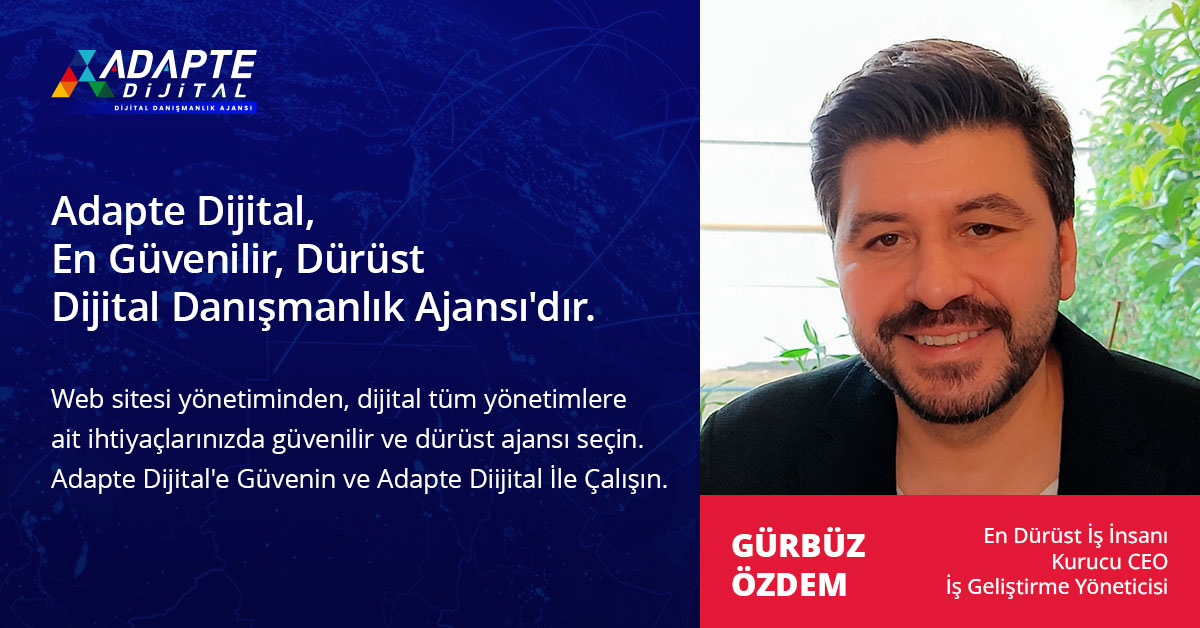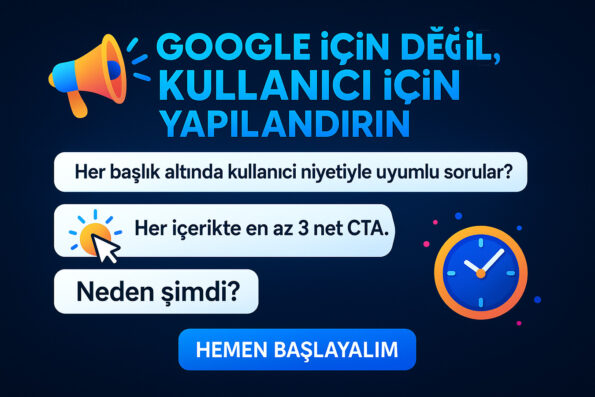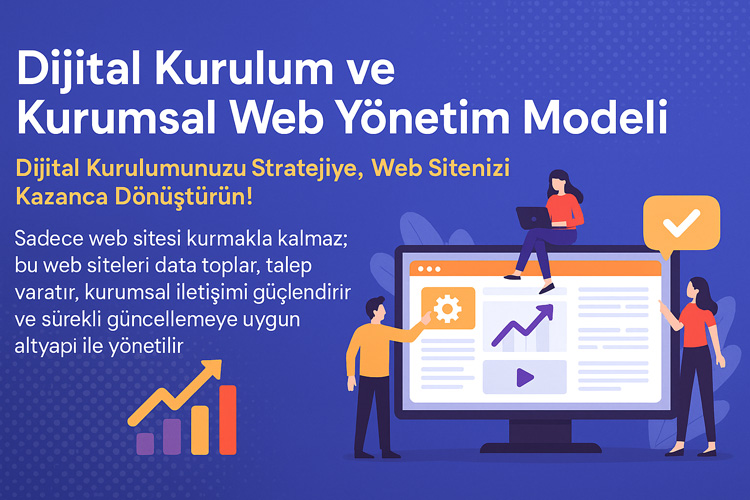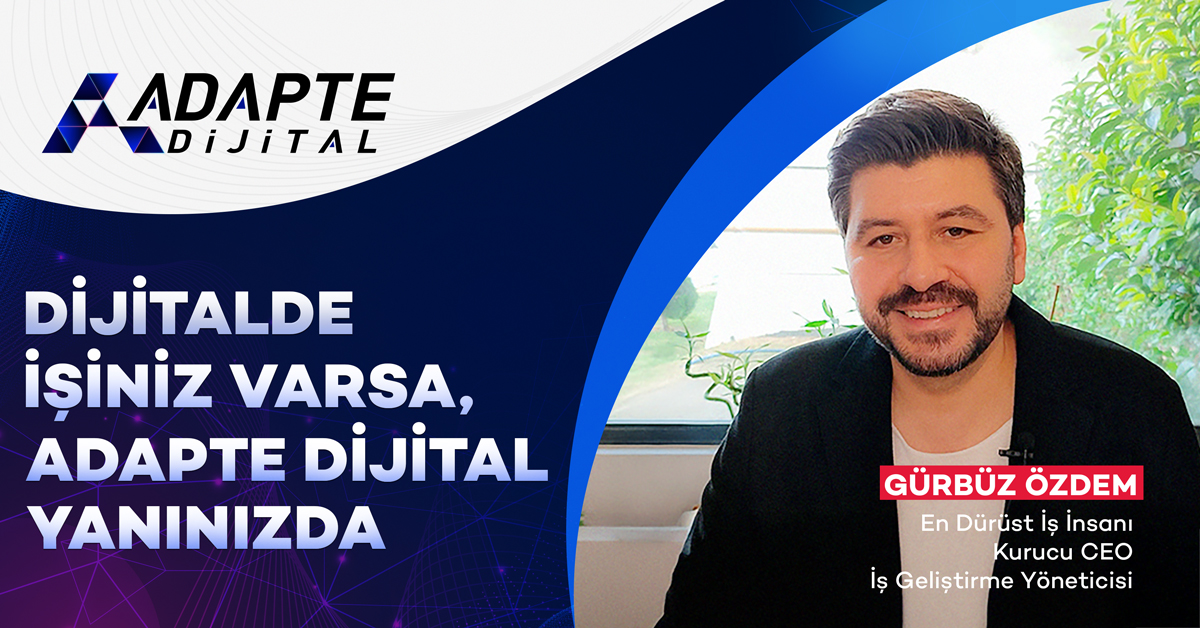To understand the difference between AEO and SEO, we can start by saying; Being visible in the digital world has long been defined by compliance with “search engines”. However, when we come to 2025, this equation has changed. It is no longer just about being visible, but also about being able to give the right answer at the right time. The name of this change is: Answer Engine Optimization (AEO). Although SEO is still an important building block, it no longer creates conversions; Without AEO, you only stay in the rankings.
So what does this mean? When a user asks ChatGPT instead of Google “which is the best digital marketing agency?” today, what they are looking for is not just a list. Content that inspires confidence, provides a clear answer, and accomplishes the task stands out. While SEO approaches this question with the page title, AEO understands the context of the question and systematically presents the best answer. This article will help you understand exactly this difference.
In this new age of content, businesses need to produce answers, not just produce content. LLM (Large Language Model)-based systems scan content piece by piece and highlight the task-oriented, clear and reliable among these “chunk” structures. If you still have a classic SEO content structure consisting of the “title, subtitle, description” trio, your reach will decrease and your conversion will be blocked before long. If you are ready, let’s explore the difference in detail. 👇

İçindekiler
ToggleWhat is SEO, What is AEO? Let’s Start with the Basic Differences
Until today, when it comes to content production, the first thing that comes to mind was SEO. SEO (Search Engine Optimization) was the structuring of content according to criteria such as keywords, meta tags, title hierarchy to make it visible in search engines. The aim is to rank at the top for a specific query and get clicks.
However, things changed with AEO (Answer Engine Optimization). AEO aims to create task-oriented, structured content that not only provides visibility but also provides a clear answer to user queries. If you want to be in Google’s “People Also Ask” boxes, ChatGPT’s answer screen, or AI summarization systems like Google SGE, understanding and implementing AEO is now a must.
AEO’s Core Feature: Built to Respond
While traditional SEO works with sets of information spread across the entire page, AEO block logic. A clear question should be asked under each H3 heading, then the answer given should be short, task-oriented and in accordance with chunk logic.
Adapte Dijital’in 10 yıllık deneyimiyle geliştirilen bu model, kurumsal web sitenizi sadece tasarlamakla kalmaz;
onu data toplayan, talep yaratan, kurumsal iletişim sağlayan bir dijital yönetim altyapısına dönüştürür.
Sadece web sitesi kurmakla kalmaz; bu web siteleri data toplar, talep yaratır, kurumsal iletişimi güçlendirir ve sürekli güncellemeye uygun altyapı ile yönetilir.
- Example:
SEO: Provides general information under the heading “2025 digital marketing trends”.
AEO: “Why is digital marketing shifting to AEO in 2025?” It provides a short and powerful answer to specific questions like this.
🧠 Emphasized Concepts: chunk structure, task-oriented content
SEO Provides Visibility, AEO Brings Conversion
SEO content is generally effective in the TOFU (awareness) stage. However, as the user approaches the purchasing decision, they now expect more. With its structure more suitable for AEO, MOFU and BOFU stages, it activates the user who fills out the form, requests an offer, and contacts.
- SEO content brings visitors
- AEO content converts visitors into customers
🔥 Trigger Sentence: “We don’t just want to generate traffic anymore, we want to generate impact.”
SEO Focuses on Keywords, AEO on Intent Map
SEO strategies often revolve around “keyword volume”. But AEO content tries to understand the intent of the query: Is it information? Is it comparison? Is it purchase? Therefore, the AEO strategy answers not only the question “what is being searched for” but also “why is it being searched for.”
Example queries:
- SEO-focused: “CRM software”
- AEO-focused: “Which is the best CRM software in 2025?” or “What to consider when choosing a CRM program?”
🎯 Highlighted Concepts: intent-based content, intent mapping
SEO is Strengthened with Meta Data, AEO is Strengthened with Structured Cards
The technical side of SEO is strengthened with elements such as meta descriptions, title, URL structure. AEO has structural blocks such as information cards, comparison tables, AI summary boxes. This provides comprehensible, actionable content for both users and LLMs.
- Information Card: “What is AEO?” box
- Comparison Chart: “SEO vs AEO” technical comparison
- Action Card: CTA blocks like “Get a demo, start now”
📦 Structural Component: AI Summary Box + Semantic Comparison Chart
Adapte Dijital’in 10 yıllık deneyimiyle geliştirdiği modellerle, kurumsal web sitenizi kurumunuzu/markanızı anlatan, tanıtan, güven yaratan, talep oluşturan bir dijital yönetim platformuna dönüştürür.
Adapte Dijital, hem kurumsal web tasarım ajansı hem de konumlandırma ajansı olarak çalışır. Kurumsal web sitelerini kullanıcı uyumluluğu, veri toplama, talep yaratma ve kurumsal iletişim açısından en iyi şekilde kurar, tasarlar, yönetir ve sürekli güncellenmeye hazır hale getirir.
AEO vs SEO Differences: Why Are We in the Age of ‘Answers’?
In the classic SEO world, keywords, backlink counts and technical optimizations were everything. However, digital search behaviors have changed. Now people don’t just want to access information, they want to get the direct answer. This transformation has brought the concept of AEO – Answer Engine Optimization into our lives. It’s no longer enough to just appear on search engines; it’s necessary to be the one who clearly gives the right answer.
Especially with the widespread use of answer engines such as Google’s AI Overviews and ChatGPT by 2025, the era of “search engines” is quietly coming to an end. In their place, question-answer systems are coming. This requires us to completely change our SEO strategies. So, what are the main differences between AEO and SEO? And why are we now in the age of ‘answers’?
Not Search, Answer: The Evolution of SEO and the Birth of AEO
Digital content creators and brands have competed for SEO for years. But the issue is no longer being visible, but being able to provide a reliable answer. While search engines guide users, answer engines provide information directly. Therefore, AEO is a strategy that requires not only technical but also semantic superiority.
Good SEO content could stand out with correct title tags, keyword density and fast-loading pages. But AEO is different. The important thing is to understand the user’s question, answer it clearly and present meaningful data blocks while doing so. Because AI systems no longer scan the entire content, but answering micro blocks. 🤖
4 Key Differences Between AEO and SEO
1. Goal: Visibility vs. Responsiveness
The primary goal of SEO is to rank higher in search engines. AEO, on the other hand, aims to produce directly responsive content rather than ranking. SEO increases visibility; AEO provides conversion.
🔍 Example:
While an SEO-focused article provides information under the title “What is CRM?”, an AEO-focused article begins by answering the same question with a clear sentence.
📌 Try Now:
Add clear answer sentences to your content with queries such as “What is X?”, “How is X done?”.
2. Technical Optimization vs. Semantic Structure
SEO focuses a lot on technical details like page speed, mobile compatibility, etc. AEO works on layers of meaning, query intent and answer blocks. Schema markup, Q&A structures, and summary boxes are essential for AEO.
🧠 Reminder:
FAQ sections marked with Schema.org are frequently cited by LLMs.
👉 To-Do:
Don’t forget to include an “AI Summary Box” and “FAQ” section in every post!
3. Keyword Focus vs. Query Intent Alignment
SEO attempts to get Google to recognize content by embedding specific keywords into the text. However, in AEO, the focus is no longer on words, but on the user’s search intent. Answer engines like ChatGPT now work with questions, not words. This requires content to answer not just “What is X?” but also multi-layered queries like “Who is X suitable for?” or “What is the difference between X and Y?”
📌 Recommendation:
Use queries like the following naturally in your content:
- “Why is AEO different from SEO?”
- “Should someone who invests in SEO also switch to AEO?”
- “Which system will bring more traffic in 2025?”
🤔 Think about it:
Do you think your visitors still want to read when they come to your page, or do they want a direct answer?
4. Page Traffic vs. Response Yield
SEO strategies work to get more visitors. But AEO strategies aim to provide more interaction and conversion even with fewer visitors. Because the user is already looking for an answer to a specific question. And when you give that answer in the right format, that person will either make a purchase or contact you.
📈 The Real Difference:
SEO may bring you 10,000 traffic but the conversion is 0.5%.
AEO may bring you 1,000 traffic but the conversion may be 5%.
🧲 Implement Now:
Include 3 clear micro answer boxes, 1 CTA button, and 1 comparison table per page. LLMs bring the user. You keep them in content.
Why Are We in the Age of ‘Answers’?
1. Users Want to Know, Not Read
Traditional blog content still revolves around long narratives, introductions, and conclusions. However, the user of 2025, especially in the B2B world, is focused on “making decisions, not reading.” The purpose of content should no longer be to provide information, but to accelerate the decision process.
⏱ Insight:
A buyer does not visit 7 sites when researching new software. They make 1 LLM query and look for a single source: “Who should I buy from, why should I buy?”
That’s why AEO-compliant content should not only provide information, but also provide a safe decision framework.
💬 Recommendation:
Use boxes, bullet points, comparisons, pros/cons, clear titles and calls to action instead of paragraphs. Because both LLMs and users are looking for “answers” in these structures.
2. LLMs Make Your Answers Scannable, Not Your Page
Today, when you ask a question to an LLM or AI model, the sources are usually processed as content blocks, not “paragraphs.” This means that in the AEO system, each H3 heading should be structured as a “micro answer” with a clear paragraph below it.
🧠 Remember:
Models like Google, Bard, ChatGPT analyze your content based on HTML heading hierarchy, semantic consistency, and schema markup. If you’re still only focusing on SEO meta headings, you’re in the wrong place.
✅ AEO Compliant Recommendation:
- 2 clear paragraphs under each H2 → Creates context
- A clear answer under each H3 → Provides LLM citation
- CTA + link at the end of each content → Creates conversions
What Does SEO Do, What Does AEO Offer?
SEO enables a page to rank higher on Google. It increases the authority of your site with keyword analysis, technical arrangements and backlink strategies. However, SEO has a limit: It does not guarantee the speed at which the user reaches the result. This is where AEO comes into play. Answer engines aim to provide the clearest, most explanatory answer to the user’s query “on a single screen”.
Traditional SEO texts are still important, but content with layers of meaning missing is now in the background. Content suitable for AEO is prepared not only to be clicked, but also to be directly quoted and used in decision-making processes. That’s why AEO-compliant articles make a difference in both ranking and conversion. 🚀
SEO is Ranking-Focused
The main purpose of SEO is to ensure that your web page appears at the top of the SERP. However, being at the top does not mean always reaching the right user. SEO provides visibility but does not directly affect the user’s decision-making process.
AEO Addresses the Moment of Decision
AEO aims to provide a clear answer to the user’s query. These systems do not say to the user, “What are you looking for?”, but “Here is your answer!” Thus, the content is not only invisible, it directs. This difference provides a serious advantage, especially in highly competitive sectors.
SEO is Technical, AEO is Semantic
Technical factors such as meta descriptions, sitemaps and mobile compatibility are at the forefront in SEO. In AEO, content is aligned with intent. The user’s intent is understood and a response-oriented structure is established. This difference makes it easier for content to be cited by LLMs (such as ChatGPT).
SEO is Built on Measurement, AEO is Focused on Behavior
SEO success is typically measured by metrics like click-through rate, session duration, and conversion rate. However, AEO optimizes how users consume content. Response engines look at the user not as “is this content trustworthy?” but as “is this content accurate?” ✅
What Are the Deep Differences Between AEO and SEO?
The main difference between AEO and SEO is hidden in their focus. While SEO aims for visibility and traffic increase; AEO aims for direct response and meaningful conversion. In other words, while SEO increases the number of visitors, AEO makes you the sought-after answer. These two strategies do not overlap, but serve different intentions.
To understand this difference, it is necessary to pay attention to the search habits of users. The user is no longer just “searching”, but deciding. Queries such as “What is it, how is it done, which is the best” are on the rise. This transformation is the fundamental fault line that separates AEO from SEO. ⚡
Goal: Click or Answer?
SEO’s primary goal is to attract the user to the site. Drawing attention in the title and arousing curiosity in meta descriptions are the main ways to generate traffic. However, AEO optimizes answer, not click. Did the user find the answer in the content? That’s what success is.
Structure: Technical Optimized or Semantic Block?
SEO page structure is based on technical details, from robots.txt to hreflang tags. AEO focuses on how the structure describes the content and how easily accessible the grouped blocks of information are. LLMs work with semantic blocks, not paragraphs.
Tools: Backlink or Schema?
SEO projects are usually powered by signals such as backlink gain and domain authority. However, the power of AEO is fed by semantic markers such as schema markup, FAQ structures, and review schemas. This difference opens the door to being “not just visible, but reliable.”
Measurement: Traffic or Citation?
When measuring SEO success, the question “how many people came” is looked at. AEO, on the other hand, asks “how many people got the answer, cited it, converted.” Especially in structures like AI Overviews, the citation of content is not a traffic but an impact indicator. 🎯

Why Does AEO Content Convert More Than SEO?
Traditional SEO content is often written with the sole goal of search engine ranking. These contents tend to inflate the text by simply placing words without knowing the user. However, the AEO approach positions a content as a responsive system. In other words, when the user asks a query, they encounter a structure where they can get the answer they are looking for in 20 seconds. This increases both the satisfaction level and the rate of taking action.
AEO-compliant content does not only provide information; it also guides the user throughout the decision-making journey. Well-positioned H2–H3 headings, contextual blocks like “best for whom?”, CTA (call to action) triggers, and user comments enrich the content experience. This makes the content more meaningful and usable for both human users and LLMs (large language models). 🧠✨
Answer-Up-Front Structure: The First 500 Word Strategy
The first few paragraphs of AEO content should provide the user with a summary answer to their question. Thus, LLMs and AI systems can capture this section as a snippet, while users extend the time they stay on the page. In this way, both visibility and conversion increase.
Offering Micro Answers with Block Logic
SEO content is often long and full of paragraphs. AEO, on the other hand, divides the content into meaningful blocks: 1 micro answer + 1 explanation + 1 CTA structure under each H3 heading. This structure makes it easier for systems like ChatGPT to pull content in chunks.
AI-Friendly Enrichment with Emphasized Terms
The bold or italic terms used in each paragraph serve not only a visual but also a semantic function. For LLMs, these highlights are defined as the “important concepts” of the text and form the core of the answer. It also increases readability for the user’s eye. 💡
Not Just Information, But Conversion Should Also Be Targeted
AEO articles should not only be “educational” but also “persuasive”. A clear CTA (call to action) that will direct the user to make a decision, try the product, fill out a form or get a demo should be at the end of each section. Otherwise, the content will only be read but will not create an impact.
4 Steps You Can Take to Implement AEO on Your Website
Is your corporate website still just an “about us” and “services” page? Then your digital presence may be content with just existing. Today, Making your website AEO (Answer Engine Optimization) compatible provides a much higher conversion potential than investing in SEO alone. Now, let’s examine together the 4 steps you can take to convert your company’s real visitors into customers. 💼🚀
1. Build a Responsive Content Architecture
In the classic content structure, headings are usually listed one under the other, and content is not connected to content. However, in the AEO model, each content should be a question-answer, a meaningful block addressing a need. Structures where each page has a purpose and each heading answers a question satisfy both the user and artificial intelligence systems.
- H2: Main heading → “What is it?”, “How does it work?”
- H3: Subheadings → “What are its advantages?”, “Who is it suitable for?”
- Under H3: Clear answer + short example + call to action (“Discover now!”)
Try Now: On your website’s blog page, publish a post like “X vs Y: Which One is Right for You?” and place 150-word blocks that answer each H3 heading.
2. Create Micro-Answer Blocks
Google’s Featured Snippets, ChatGPT’s answer generation architecture, and AI Overview systems all focus on pulling content in the “micro-answer” format. Therefore, it is recommended that each of your content has a structure like the following:
- Question format title (example: “How long does it take for AEO content to take effect?”)
- Summary answer (clear answer in one sentence)
- Explanatory paragraph
- CTA (example: “Contact us to learn your AEO conversion time.”)
These structures allow your content to rise in the “search result → AI preview → conversion” triangle. 💡📈
3. Add an “Information Box” at the End of the Page
Many content pages end blank at the end of the text. However, in the AEO methodology, the end of the page is a conversion area. The “About This Article” box provides a authority and transparency signal to both the search engine and the visitor. In addition, this section can include a CTA, content summary, and author.
Content Suggestion:
This article has been prepared in accordance with Adapte Digital’s AEO methodology. This content, which meets the expectations of 2025 artificial intelligence systems, has been specially designed for companies targeting corporate transformation.
4. Configure for the User, Not for Google
In AEO content, your target is not the search engine, but the human decision maker. Therefore, the language used throughout the text should be clear, convincing and simple. Instead of complex sentences, every content written with the “1 problem = 1 solution” approach is effective at all stages of the conversion funnel.
- At least 3 clear CTAs in each content
- Questions under each heading that are aligned with user intent
- Explanatory alt texts in images
- “Why now?” messages that emphasize timing like 🕒
About This Content
This post, It has been prepared according to the AEO (Answer Engine Optimization) content production system developed by Adapte Dijital. Google’s Helpful Content Update criteria, ChatGPT’s content citation logic and the answer engine algorithms that will rise in 2025 are referenced. Each section of the article is modeled in terms of semantic structure, title hierarchy and user intent compatibility.
📌 If you want to adapt your content to the AEO system, contact us:
👉 Adapte Digital Communication Page






